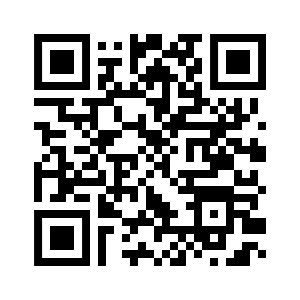EFEKTIVITAS EKSTRAK ETANOL DAUN SIRIH MERAH (Piper crocatum Ruiz & Pav.) SEBAGAI REPELEN TERHADAP NYAMUK Aedes aegypti
Abstract
Keywords
Full Text:
PDFReferences
Tim Field Lab FK UNS. Modul Field Labprogram Pengendalian Penyakit Menular: Demam berdarah dengue. Journal of Petrology. 2013;1689–1699(369).
Priesley F, Reza M, Rusdji SR. Hubungan perilaku pemberantasan sarang nyamuk dengan menutup, menguras dan mendaur ulang plus (psn m plus) terhadap kejadian demam berdarah dengue (dbd) di Kelurahan Andalas. Journal Kesehatan Andalas. 2018;7(1):124.
Syamsir S, Pangestuty DM. Autocorrelation of spatial based dengue hemorrhagic fever cases in air putih area, Samarinda City. Journal Kesehatan Lingkungan. 2020;12(2):78.
Jacob, Sandjaya. Faktor - faktor yang mempengaruhi kualitas hidup masyarakat karubaga district sub district tolikara Propvinsi Papua. Jurnal Nasional Ilmu Kesehatan (Jnik). 2018;1(69):1–16.
Dinas Kesehatan Provinsi Kalimantan Selatan Banjarmasin. Data Kasus demam berdarah dengue (DBD) Provinsi Kalimantan Selatan. Banjarmasin: Dinas Kesehatan; 2016.
Fajarini DA, Murrukmihadi M. Uji aktivitas repelen minyak atsiri daun kemangi (Ocimun basilicum (I.) f. (Citratum back) terhadap nyamuk Aedes aegypti dalam sediaan lotion dan uji sifat fisik lotion. Yogyakarta: Fakultas Farmasi Universitas Gadjah Mada. 2015; 20(2):91-97.
Handayni A. Keanekaragaman Lamiaceae berpotensi obat koleksi tanaman tumbuhan Kebun Raya Cibodas, Jawa Barat. Cibodas: UPT Balai Konsevasi Tumbuhan Kebun Raya. 2015; 1(6):1324-1327.
Widawati M. Sediaan losion minyak atsiri (Piper betle l.) dengan penambahan minyak nilam sebagai repelen nyamuk Aedes aegypti. Ciamis: Loka Litbang P2B2. 2014;10(02):77–82.
Gurning DMR, Marsaulina MSI, Hasan W. Efektivitas ekstrak bunga kecombrang (Etlingera elatior) sebagai repellent nyamuk Aedes aegypti. Dosen Fakultas Kesehatan Masyarakat. Universitas Sumatera Utara 2016;4(1):1-11
Hebert A, Yotopranoto S, Hamidah. Efektivitas ekstrak daun jeruk purut (Citrus hystrix), jeruk limau (Citrus amblycarpa), dan jeruk bali (Citrus maxima) terhadap larva Aedes aegypti. Jurnal Penelitian Penyakit Tular Vektor. 2014. 6(1): 1- 6.
Betrion, Yayha. Potensi serbuk daun sirih (Piper betel Linn) sebagai lavarsida nyamuk Aedes aegypti. Fokus Utama. 2013; 20-8.
Setiawan B, Zarqya I, Putro S, Khasanah F. The effect of red betel leaf’s essential oil (Piper crocatum Ruiz & Pav.) against third instar Aedes aegypti larvae. Pakistan Journal of Medical and Health Sciences. 2019;13(4):1162–4.
Federrer W. Statistic and society data collection and interpretation. 2nd ed. New York: Marcel Dekker; 1991.
WHOPES. Guidelines for Efficacy Testing of Mosquito Repellents for Human Skin.World Health Organization Pesticide Evaluation Scheme. 2009.
Kumoro AC. Teknologi ekstraksi senyawa bahan aktif dari tanaman obat. Yogyakarta: Plantaxia; 2015.
Martha K, Vika L, Maria N. Efektivitas ekstrak etanol daun sirih (Piper betle L.) terhadap mortalitas larva nyamuk Aniopheles sp. Dan Culex. Molucca Medica 2012;4(1):88-105
Tiwari P. Phytochemical screening and extraction: a review. Intemationale Pharmaceutica Sciencia. 2011;1(1)98-106.
Aziz T, Febrizky S, Mario AD. Pengaruh jenis pelarut terhadap persen yieldalkaloid dari daun salam India (Murayya koenigio. Teknik Kimia.2014:2(20):1-6.
Zen S, Asih T. Potensi ekstrak bunga tahi kotok (Tagetes Erecta) sebagai Repellent terhadap nyamuk Aedes aegypti yang aman dan ramah lingkungan. Lampung: Pendidikan Biologi FKIP Universitas Muhammadiyah Metro Jurnal Pendidik Biologi. 2017;8(2):142-149.
Shinta. Potensi minyak atsiri daun nilam (Pogostemon cablin B.), daun babadotan (Cananga odorata hook F & Thoms) dan daun rosemary (Resemarius officinalis L) sebagai repelan terhadap nyamuk Aedes aegypti L. [Skripsi]. Jakarta: Media Litbang Kesehatan.2012; 22(2): 61-69.
Musdalifah. Uji efektivitas ekstrak kulit buah jeruk nipis (Citrus aurantifolia) sebagai insektisida hayati terhadap nyamuk Aedes aegypti [Skripsi]. Makassar: UIN Alauddin Makssar;2016.
Dharmawan ESNA. Aktivitas lavarsida ekstrak etanol daun sirih merah (Piper crocatum Ruiz & Pav.) terhadap nyamuk Aedes aegypti [Skripsi]. Banjarmasin: Fakultas Kedokteran Universitas Lambung Mangkurat; 2017.
Ratnasari N. Perbedaan efektifitas minyak atsiri bunga kenanga (Cananga odorata) sebagai repelan terhadap gigitan nyamuk Aedes aegypti dengan konsentrasi 5%, 15% dan 25% [Skripsi]. Denpasar: Universitas Udayana;2014.
Santya RNRE, Hendri J. Daya proteksi ekstrak kulit jeruk purut (Citrus hystrix) terhadap nyamuk demam berdarah. Jakarta: Aspirator. 2013:5(2)61-6.
Puspita Puspa J, Safithri M, Sugihartati Nirmala P, Aktivitas antibakteri ekstrak daun sirih merah 2019;5(3):1–10.
Hamzah SR. Uji efektifitas ekstrak daun sirih merah dan daun sirih hijau terhadap kematian larva Aedes sp. 2018;4.
Ayu, Nurdini DA. Efektifitas ekstrak kayu manis (Cinnamomum burmanni) terhadap kematian larva Aedes sp. 2015;3(2), 54–67. Retrieved from http://repositorio.unan.edu.ni/2986/1/5624.pd.
Gunawan D, Kurniaty R. Pemanfaatan minyak atsiri daun sirih (Piper Betle Linn) sebagai anti nyamuk. Journal of Pharmaceutical and Health Research. 2021;2(2):46–9.
Oka Adi Parwata I, Rahayu Santi S, Sulaksana I, Alit Widiarthini I. Aktivitas larvasida minyak atsiri pada daun sirih (Piper Betle Linn) terhadap larva nyamuk Aedes aegypti. Journal Kimia. 2012;5(2):88–93.
Hutagalung D, Marsaulina I, Naria E. Pengaruh ekstrak daun kenikir (Tagetes erecta L.) sebagai repellent tehadap nyamuk Aedes sp. Medan: Fakultas Kesehatan Masyarakat Universitas Sumatra Utara.2013
DOI: https://doi.org/10.20527/ht.v5i3.7736
Refbacks
- There are currently no refbacks.
Copyright (c) 2023 Homeostasis

Homeostasis is licensed under a Creative Commons Attribution 4.0 International License
Program Studi Kedokteran Program Sarjana
Fakultas Kedokteran Universitas Lambung Mangkurat
Jalan Veteran No.128 Banjarmasin
Phone: +62-878-1546-0096
email : [email protected]














